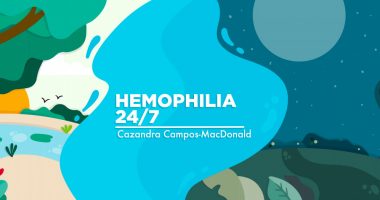Navigating physical activities and sports with hemophilia B
Last updated March 13, 2024, by Susie Strachan

Thanks to treatment advancements, people with the bleeding disorder hemophilia B are able to enjoy a variety of sports and physical activities.
Staying active not only improves your physical health, it can boost your self-confidence, mental health, and social circle.
Low-impact sports, which help overall fitness, flexibility, and cardiovascular health, are favored over high-impact and contact sports that have a higher risk of falls or trauma.
As bleeding from an injury is always a possibility, it is important to be prepared by timing prophylactic treatments before sports activities and knowing what to do in case of an emergency.
Benefits of exercise for people with hemophilia B
While people with hemophilia B used to be advised to avoid most sports — because of the risk of an injury causing prolonged bleeding — the availability of prophylactic treatments has opened up a world of exercise options.
Participating in sports offers such exercise benefits as building stronger muscles and bones, decreasing high blood pressure, and improving cardiovascular health. It’s also a great way to meet other people and engage in teamwork. For people with hemophilia B, physical activities offer other benefits.
Being active can help manage the chronic pain associated with hemophilia B. It also can support joint health by improving flexibility and reducing stiffness. Strengthening the muscles around the joints can provide added support, and reduce joint pain and spontaneous joint bleeds.
Activities that involve coordination and balance, such as yoga or tai chi, can enhance overall body control. They can help you move more confidently, reducing the risk of falls or injury, especially as you get older.
Exercise planning and risk assessment
Before starting any exercise routine, your doctor or physiotherapist can assess your health status, including your bleeding history, joint health, and overall physical condition.
You can also speak to your doctor or physical therapist about:
- risks of playing different types of sports, including the effect on joint pain and spontaneous bleeding
- early signs of a bleeding episode, and how it can be treated
- what to do in an emergency
- making others who may be assisting you, such as a personal trainer or coach, aware of how hemophilia B may affect your activities.
Your healthcare team can help you create an exercise plan that is right for you.
It may take into account your age, individual needs and limitations, and teach you how to gradually increase the intensity and duration of physical activity while decreasing the risk of overexertion or injury.
These professionals can walk you through the benefits and risks of your chosen activity and suggest adaptations that can make it easier and safer to participate in.
This may mean using proper safety gear, such as braces or pads, or wearing a helmet while cycling or rollerblading to protect against impact-related injuries.
If injured, physical therapy may be needed to help restore function, reduce pain, and improve overall mobility.
Another safety tip is to follow a warmup and cooldown routine to prepare your body for exercise and promote recovery afterward. A warmup gradually increases your heart rate and circulation, while a cooldown can prevent muscle soreness.
These routines are particularly important for someone with hemophilia B, because they enhance joint mobility and reduce the risk of injuries.
Activities to consider
Typical exercises for hemophilia B focus on stretching, strengthening, balance, core stability, endurance, and functional strengthening.
Cardiovascular exercises, such as swimming or cycling, help enhance heart and lung function.
Weight-bearing activities, including walking or resistance training, can increase or maintain good bone density. This is particularly beneficial, as people with hemophilia B may be at a higher risk of bone density issues.
According to physiotherapists, other low-impact activities include:
- yoga
- tai chi
- light weightlifting
- golf
- hiking
- snorkeling.
These activities also are considered to be easier on the joints and less likely to cause bleeding episodes:
- table tennis
- dancing
- badminton
- bowling.
When going to a gym, opt for low-impact machines such as an elliptical or stationary bicycle.
When trying a new sport or activity, consider working with a coach or trainer. The coach can observe your movements, provide guidance on proper techniques, and intervene if any activity appears unsafe.
A supportive training environment allows you to actively participate in your own safety while building self-confidence and meeting your activity goals.
Consider doing activities with a friend to boost your enjoyment and motivation. For people with hemophilia B, having a friend along also is an added layer of safety, especially when doing outdoor activities.
Activities to avoid
If you are thinking of trying high-impact and contact sports, or activities that have a high risk of falls or trauma, you should first discuss your plans with your healthcare provider.
Team sports that are known for collision and injury include:
- soccer
- rugby
- football
- basketball
- wrestling
- lacrosse
- hockey.
Other sports and activities to avoid because of the high risk of injury, such as falls and joint trauma, include:
- gymnastics
- alpine skiing
- skateboarding
- powerlifting weights
- rock climbing
- boxing
- karate
- judo
- hang-gliding.
BMX racing, competitive diving, motocross racing, motorcycling, snowmobiling, and trampolining also are considered to be more dangerous.
Activities for older adults
As we age, our risk of joint damage with hemophilia B increases. As a result, older adults may experience chronic pain and reduced mobility. However, it is essential to remain active to help strengthen joints and muscles, maintain a healthy weight, and provide an outlet for stress or tension.
Older adults are advised to choose activities that are easier on the joints, such as:
- walking
- swimming
- yoga
- Pilates
- cycling
- strength (weight-bearing) exercises
- dancing
- bowling.
Minimizing and managing bleeding
Playing low-impact sports — such as swimming, cycling, or walking — is one of the easiest ways to reduce the risk of getting injured.
Recognizing typical disease symptoms of a bleeding episode, including bleeding into a joint, can help you decide when to stop doing a physical activity.
Signs of bleeding into a joint include:
- skin that may feel warm to the touch and appear reddened
- swelling in and around the joint
- stiffness, reduced flexibility, or a sense of tightness
- bruising
- persistent or sudden onset of joint pain
- difficulty putting weight on the affected limb.
But as even low-risk physical activities come with risk, it’s a good idea to always have a treatment plan ready.
A plan might involve everything from doing first aid or administering factor replacement therapy, to seeking immediate medical assistance or emergency care.
When managing minor bleeds, use the Rest-Ice-Compression-Elevation (RICE) method:
- rest the injured area to prevent further damage
- ice the area to reduce swelling and inflammation by applying a cold pack
- compression involves applying pressure to the injured area with a compression bandage or wrap, to help control swelling and provide support to the injured area
- elevation helps reduce swelling by allowing fluids to drain away from the injured area.
If you’ve been prescribed factor replacement therapy and are trained in self-administering it, you or a caregiver may administer the factor as directed by a healthcare provider.
Carry an emergency kit with the therapy, syringes, and other first aid items. Your coach, teammates, and friends may be willing to learn to help you administer the therapy. They also can assist you in getting medical aid or emergency care, if needed.
Hemophilia News Today is strictly a news and information website about the disease. It does not provide medical advice, diagnosis or treatment. This content is not intended to be a substitute for professional medical advice, diagnosis, or treatment. Always seek the advice of your physician or other qualified health provider with any questions you may have regarding a medical condition. Never disregard professional medical advice or delay in seeking it because of something you have read on this website.
Related articles





